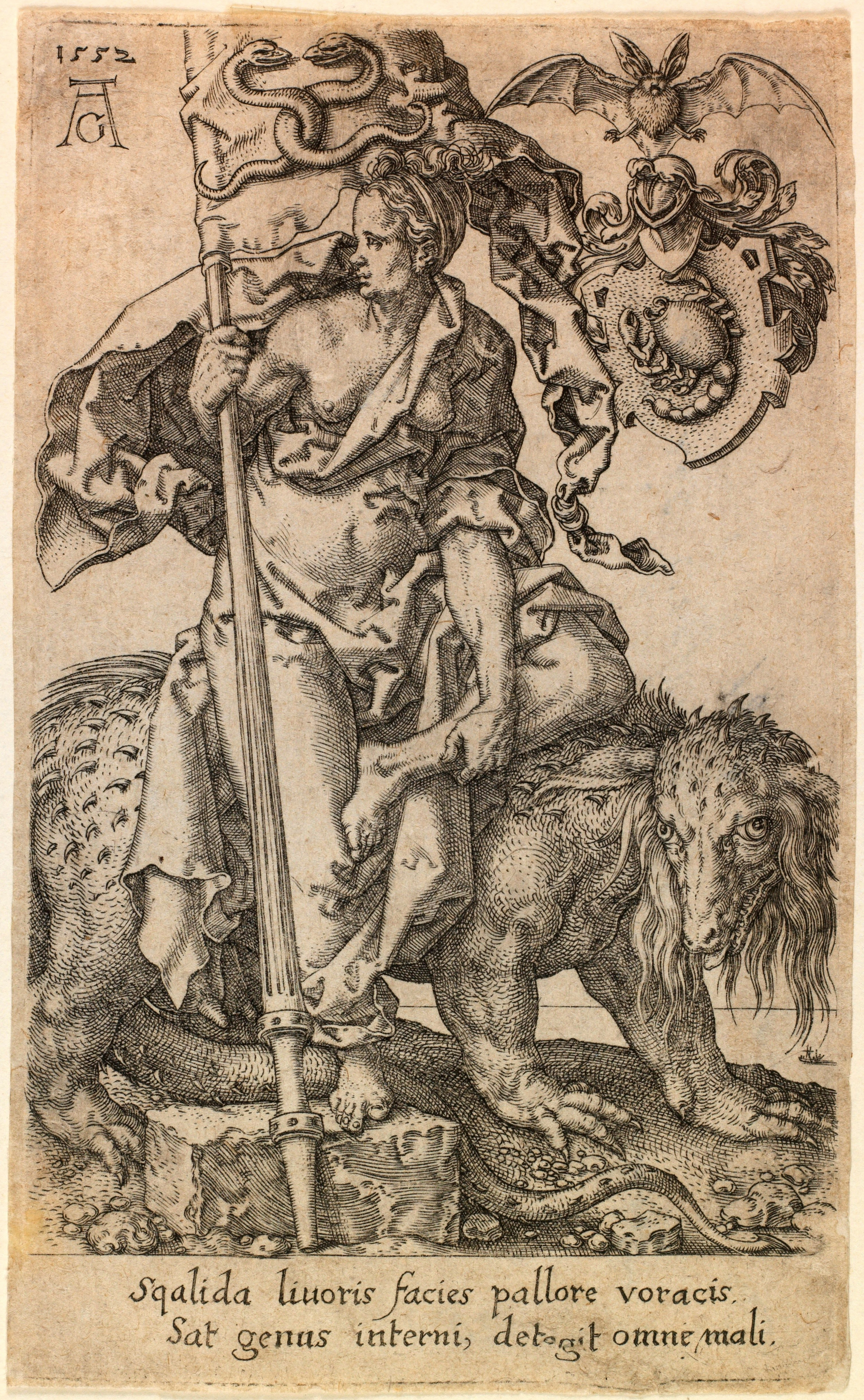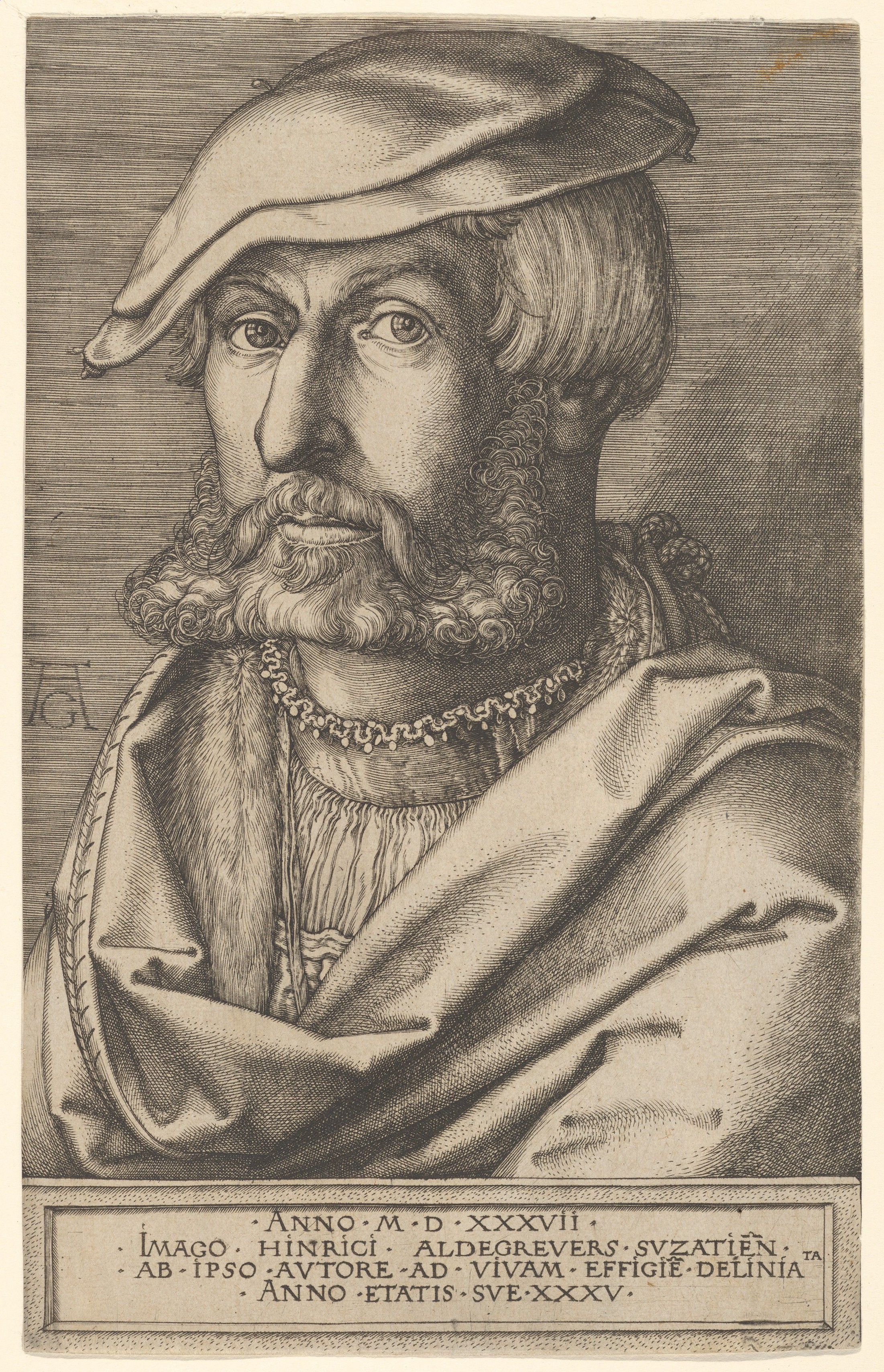How profound an impact the Renaissance master Albrecht Dürer had on contemporary European graphic art can be seen from the copper engraving by his compatriot Heinrich Aldegrever. A member of the group of German Little Masters, who earned this name from their scrupulous engraving in miniature format, he designed his motifs stylistically and formally in the Dürer tradition and even modelled his signature on his great exemplar. His series of copper engravings are an iconographic mirror of the Renaissance universe, inclined to systemisation and creating or observing its inner (including moral) order in categories of measure and number. Aldegrever’s Envy (Invidia), a print in the cycle of allegorical depictions of the Vices or the Seven Deadly Sins (then too, as now, they appear in counterpoise to the Seven Virtues), is based on biblical numerical symbolism and Christian moral metaphor. The theological and moral meaning of the copper engravings is expressed in rich artistic symbolism, which illustrates the negative nature of the depicted personification: the indecent pose of Envy on the back of a monster, the entwined snake on the flag and the scorpion on the heraldic shield (these are animals which, like sin, poison humanity), the bat as a symbol of the blindness or self-deception caused by envy, and so on.




Envy
engraving • 105 x 65 mm
 Heinrich Aldegrever
Heinrich Aldegrever